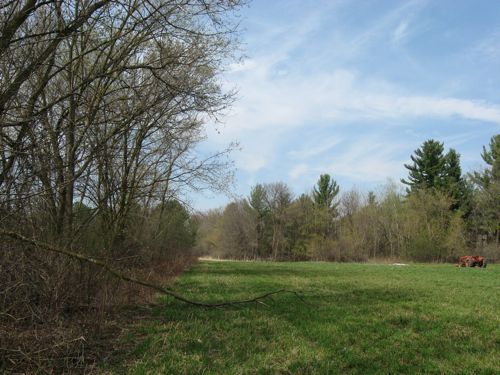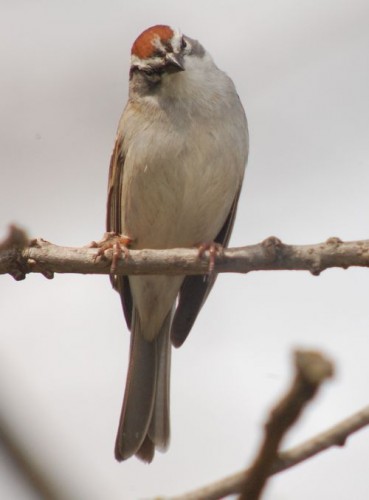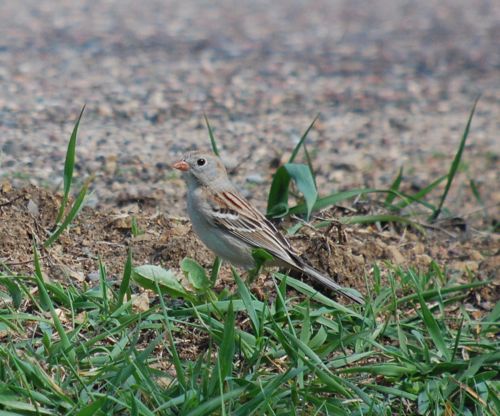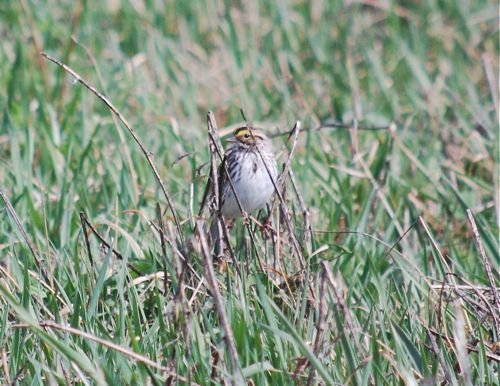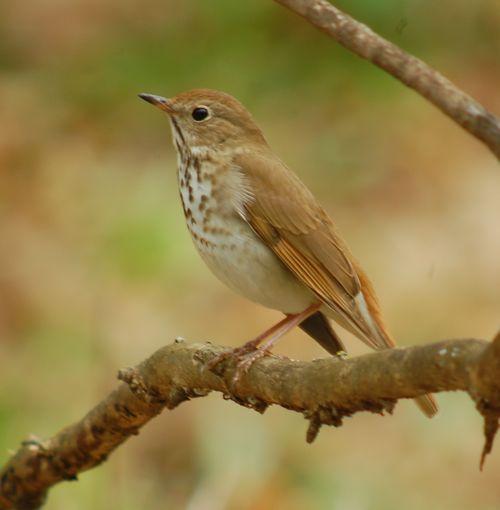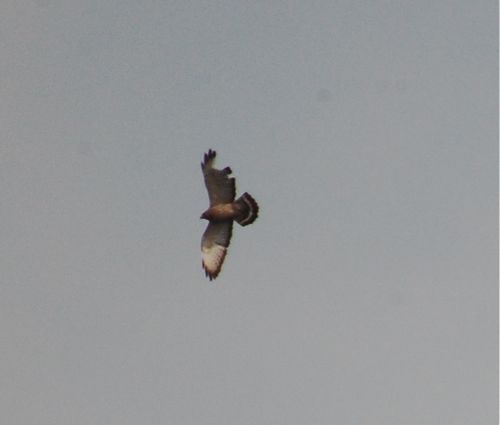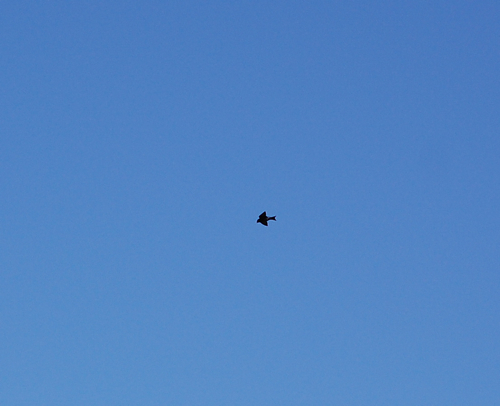 When I was leaving Crex Meadows last Friday, I drove through Grantsburg, WI and a large, dark swallow flying overhead caught my attention--purple martins! There were only a few flying, but I drove to the city park to see if I could get better views.
When I was leaving Crex Meadows last Friday, I drove through Grantsburg, WI and a large, dark swallow flying overhead caught my attention--purple martins! There were only a few flying, but I drove to the city park to see if I could get better views.

These are the purple martin houses in the park, mounted perfectly out in the open and next to a lake. They have both a wooden house and hanging gourds on telescoping poles--a professional setup. When I worked at the bird store in the Twin Cities, we used to tell people that you could see purple martins around April 15 (tax time) and I took these photos on April 16 so these martins were right on time.

There were only adult males flying around the house--strong, hardy birds risking an early arrival when food might be scarce to secure the best nest cavities to attract females. I love that people provide housing for martins, but I do wonder that these birds rely too heavily on humans. Before European settlement in North America, these birds nested communally in snags with several woodpecker holes. Now, they nest on human made houses and gourds. And check out that structure: a low oval shaped hole and a little deck--I'm sure this design has come about in the last 15 years as a way to keep out non native species like house sparrows and starlings but still--no tree in the wild is going to have a deck and I've yet to find a woodpecker that would make a cavity in that shape.

I checked out Birds of North America Online to see what information was available on martin populations and found this paragraph:
"Reproductive success can be increased by offering birdhouses with larger cavities (15 x 30 cm or larger), making nests harder for owls or other avian predators to reach (Wilkins 1994), or by using gourds; by installing owl guards on birdhouses (Bowditch 1990) and snake guards on poles; by reducing ectoparasite populations through application of insecticide (pieces of No-Pest Strip or 5% Sevin) to nests or through replacement of existing nesting material with fresh grass; by modifying entrance holes to exclude starlings (Keller 1995); and by installing porch dividers to prevent older nestlings from entering adjacent nests and stealing food from younger broods (Morton 1991)."
I find some of that paragraph disturbing. I love that people are creating nesting sites for martins--that's awesome and great way to give back to what we've taken away from their habitat. However, applying pesticides to nests? Replace existing nesting material with fresh? Installing porch dividers to prevent older nestlings from stealing food from younger nestlings? That is going too far. When people interfere with a martin colony to the point of doing things beyond what the martins would be doing naturally on their own in the wild, then those birds cease to be wild birds, but become pets. Or at the very least, "kept birds" like a set a triplets at the Playboy Mansion. Maybe older nestlings stealing food from younger nestlings ensures the stronger martins survive (happens in the raptor world all the time). Maybe some martins dying from insects will help sort out birds who are strong enough to survive that survive over birds too weak to tolerate blood sucking insects). Maybe birds raised in nests that have the material replaced constantly will have a weaker immune system. BNA pointed out that most people simply put up a house and not go to extreme measures. But still, I'm baffled by people who do these things and think they are helping the population over all.
Although, if I'm going to argue that, should I argue about baffles placed on poles to keep out raccoons, squirrels and snakes? Trees in the wild wouldn't have that? And while I'm complaining about too much human interference, should I take down my bird feeders? And now the can is open and worms are everywhere.

I posted a photo last week of one of these martins and someone said that she couldn't see the difference between purple martins and blackbirds and starlings. So I thought I'd post a couple of photos in case others couldn't tell them apart. Martins are very dark, so I can understand how they could resemble blackbirds to the untrained eye. First, follow this link from Xeno-Canto to hear what purple martins sound like.

Here's a common grackle. Note the yellow eye (martins have dark eyes). Also, if you look at the photos above, you'll see a purple or almost indigo sheen. The grackle has a blue sheen to its head and the body is bronze. The bill and tail is much longer than a martin's bill and tail. Also, if you look up at one of the martin photos above, you'll see a slight fork to the tail--grackles do not have that. Also, grackles are not cavity nesters like martins. They build cup nests in tree branches. Here's what grackles sound like.

Here is a starling. They do nest in cavities and sometimes they will even try to take over a purple martin colony. Starlings during the breeding season have a yellow bill (in winter, it's black). They tend to have a more greenish sheen to their feathers. In winter, they have speckles on their feathers, but they are worn off in the breeding season. Also, starlings can mimic...so they could sound like martin, but here are some common starling songs.

I don't think I need to post a photo of a red-winged blackbird--you don't see any patches of red on the wings of a purple martin. If you've never visited a purple martin colony, do check out the one in Grantsburg...or find out if there are any nesting near your town. They are a pleasant bird to watch and listen too. I do enjoy that loud warble of a large colony.
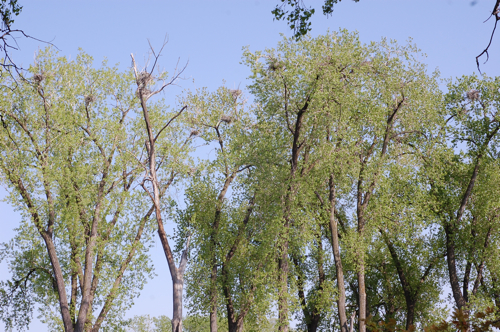
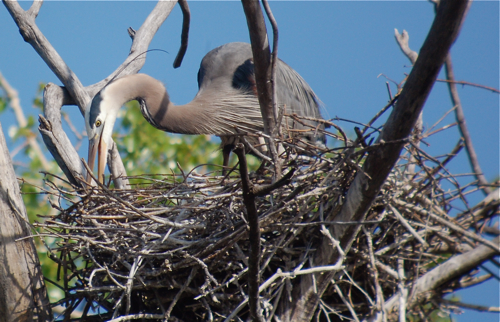
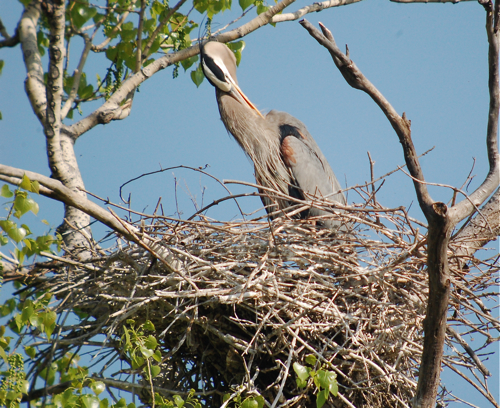

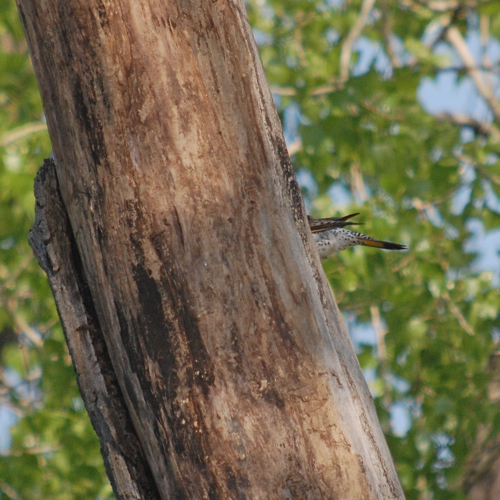
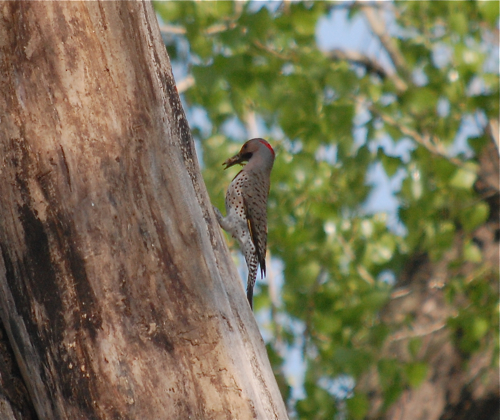

 When I was leaving Crex Meadows last Friday, I drove through Grantsburg, WI and a large, dark swallow flying overhead caught my attention--purple martins! There were only a few flying, but I drove to the city park to see if I could get better views.
When I was leaving Crex Meadows last Friday, I drove through Grantsburg, WI and a large, dark swallow flying overhead caught my attention--purple martins! There were only a few flying, but I drove to the city park to see if I could get better views.






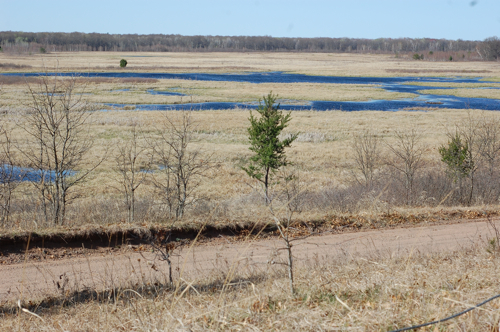 Last Friday I went up to do Duluth for a workshop. I was only there for the day and thought that I would stop by
Last Friday I went up to do Duluth for a workshop. I was only there for the day and thought that I would stop by 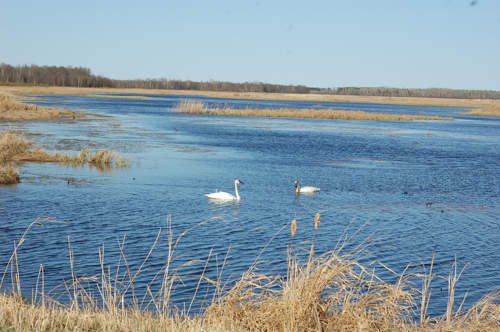
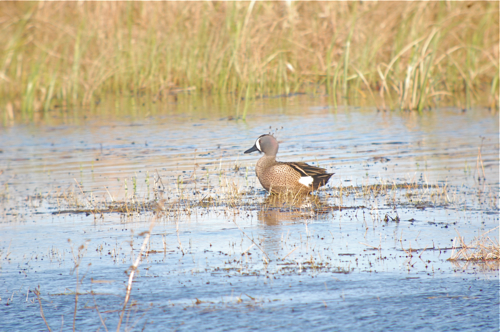
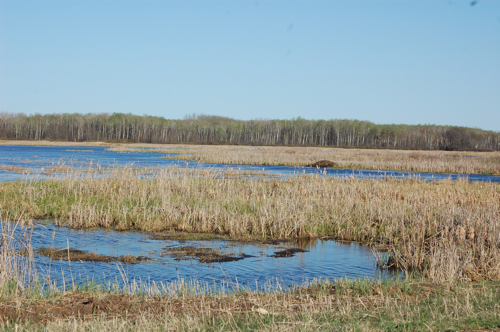

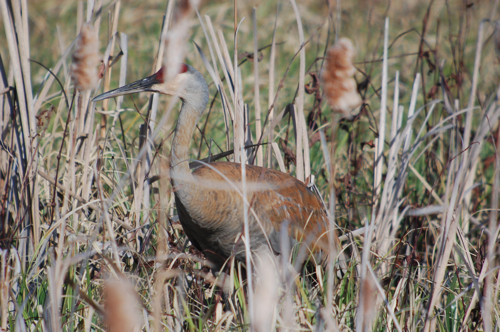
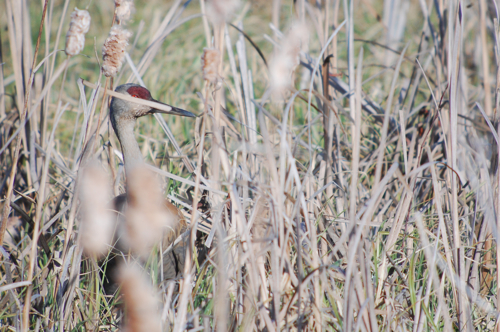
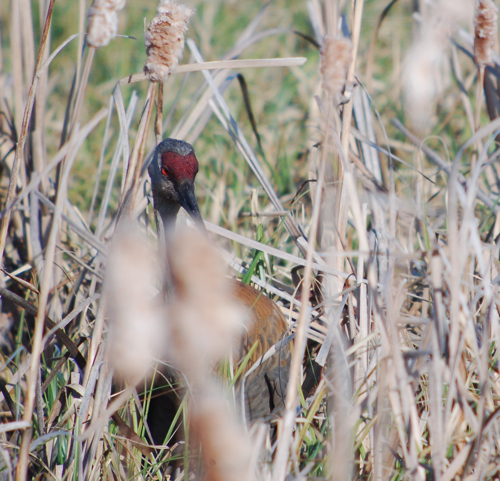

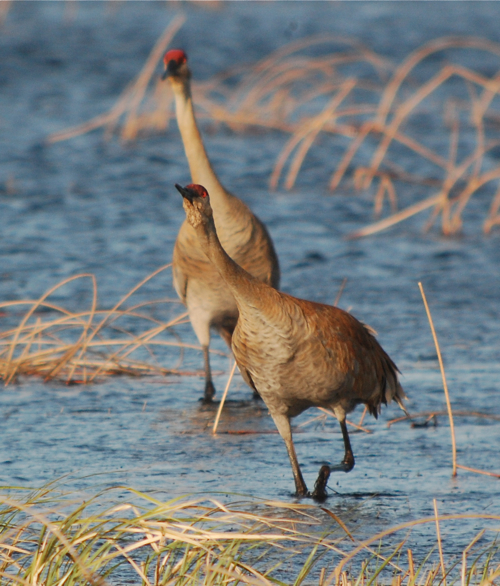
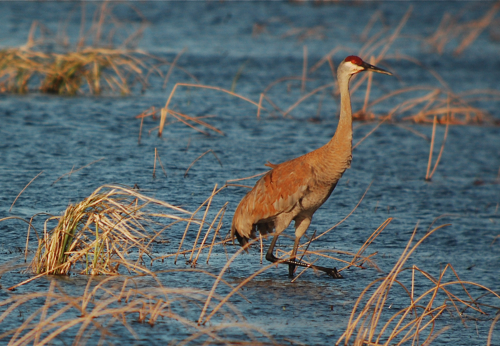

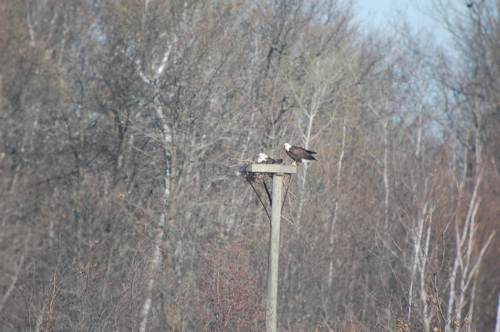
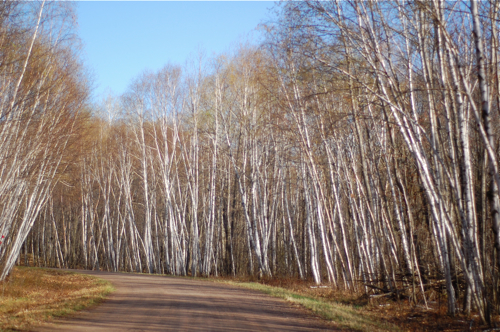
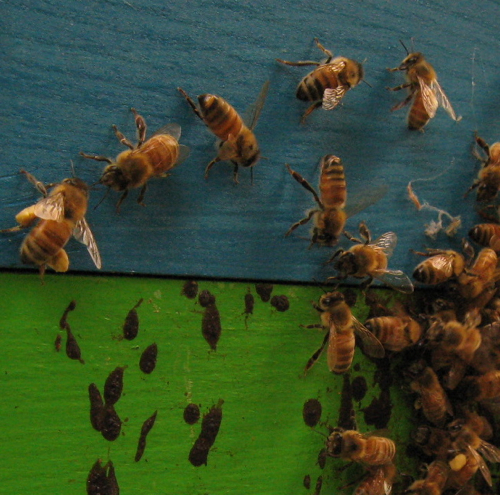 I know the reports for allergy sufferers has been rough this spring, but our bees our loving it. They are returning to the hives with massive pollen baskets. All four hives are still going strong this spring. I think this early spring allowed us to open them up early enough to get them ventilated and get a head start on the brood and set up for this summer's honey season.
I know the reports for allergy sufferers has been rough this spring, but our bees our loving it. They are returning to the hives with massive pollen baskets. All four hives are still going strong this spring. I think this early spring allowed us to open them up early enough to get them ventilated and get a head start on the brood and set up for this summer's honey season.

 Sandhill cranes works his camo mojo.
Sandhill cranes works his camo mojo. Anyone in Minnesota or Wisconsin have purple martin houses? Are they ready? Today I say my first of the year purple martins in
Anyone in Minnesota or Wisconsin have purple martin houses? Are they ready? Today I say my first of the year purple martins in 